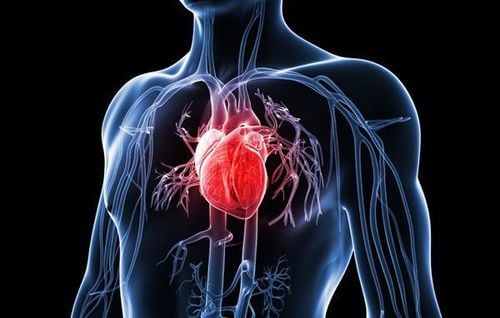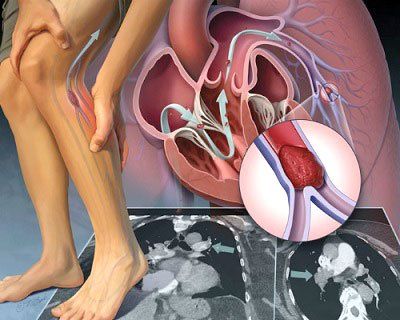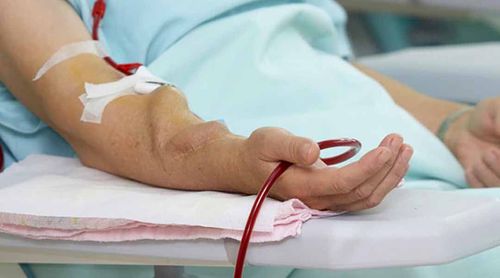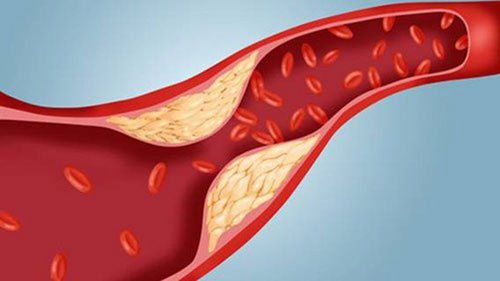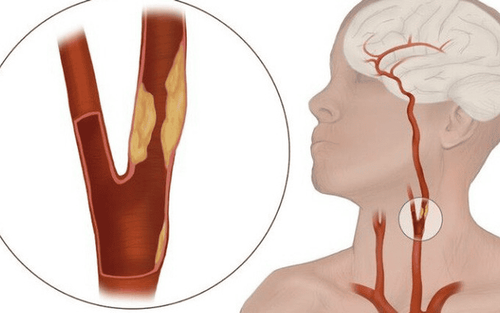This is an automatically translated article.
Takayasu vasculitis is inflammation in the walls of blood vessels, sometimes causing a complete blockage of the artery. Takayasu disease is a rare disease, the exact cause of which is unknown. Treatment of takayasu vasculitis is challenging, mainly still treating the vasculitis and preventing complications.1. What is Takayasu's arteritis?
Takayasu vasculitis is a rare disease, with inflammation mainly affecting large arteries such as the aorta. Takayasu disease can lead to blockage of the arteries or narrowing of the arteries or dilation of the arteries. Takayasu's vasculitis is sometimes referred to as "vasodilator disease", because the peripheral vessels are difficult to detect due to narrowing of the blood vessels.
Takayasu vasculitis mainly occurs in girls and women under 40 years of age. The ratio of women to men is 9:1. Although the disease has a worldwide distribution, it is more common in Asian women. The frequency of takayasu is about 2 - 3 patients per million in the population per year.
2. Causes of takayasu . disease
The cause of takayasu vasculitis is unknown. Some evidence suggests that, when infection with a virus, bacteria, or other agent occurs in a person with risk factors (such as susceptibility genes), it can lead to takayasu disease. This is a compelling hypothesis, but solid evidence is lacking. Pathology revealed chronic granulocytic infiltrative vasculitis with diffuse damage to the aorta and other major arteries carrying blood from the heart to the rest of the body. Over time, vasculitis causes changes in the artery lumen including wall thickening, lumen narrowing, and scarring. The result is reduced blood flow to vital tissues and organs, which can lead to complications and even death. Occasionally, takayasu vasculitis destroys the medial lining causing the artery to dilate abnormally, leading to an aneurysm with a risk of rupture of the aneurysm.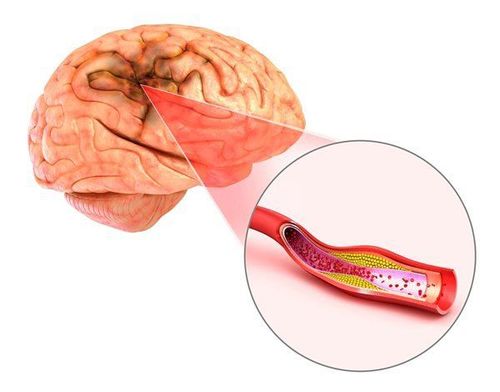
Viêm mạch Takayasu dẫn đến giảm lưu thông máu não
3. Symptoms of Takayasu disease
Takayasu vasculitis is a chronic inflammatory condition that affects the largest blood vessel in the body (the aorta) and its branches. Thus, complications of takayasu disease arise directly or indirectly from damage to these blood vessels.
Takayasu vasculitis is divided into two stages: systemic phase and occlusive phase. Despite this division, the two stages are not always distinct, i.e. patients can have features of both stages at the same time.
Systemic stage Patient has symptoms and signs of active inflammation. These may include:
Systemic symptoms such as fever, fatigue, weight loss. Arthritis and pain are nonspecific. There may be pain in the affected arteries. Most patients have an elevated erythrocyte sedimentation rate during the systemic phase. Vascular phase The patient begins to show symptoms due to arterial stenosis. These may include:
Pain in the limbs that occurs during repetitive activities such as pain in the arm that occurs when using a hacksaw or pain in the calf when walking. Dizziness when standing up, headaches and vision problems. Chest pain. Heart failure . Stroke . The blood vessels are so narrow that a pulse cannot be felt in the neck, elbows, wrists, or legs. When a stethoscope is used, a murmur may be heard due to the blood flow through the abnormally narrowed vessels. Hypertension . Sometimes blood pressure in the arm can be artificially low if an artery in the upper arm is narrowed. Blood pressure difference in two arms. Ophthalmoscopy can observe the characteristic vascular malformations that occur in cases of advanced Takayasu arteritis. Takayasu's vasculitis is a chronic inflammatory condition that affects the largest blood vessel in the body (the aorta) and its branches. Thus, complications of takayasu disease arise directly or indirectly from damage to these blood vessels.
Takayasu vasculitis is divided into two stages: systemic phase and occlusive phase. Despite this division, the two stages are not always distinct, i.e. patients can have features of both stages at the same time.
Systemic stage Patient has symptoms and signs of active inflammation. These may include:
Systemic symptoms such as fever, fatigue, weight loss. Arthritis and pain are nonspecific. There may be pain in the affected arteries. Most patients have an elevated erythrocyte sedimentation rate during the systemic phase. The occlusive phase The patient begins to show symptoms due to arterial stenosis. These may include:
Pain in the limbs that occurs during repetitive activities such as pain in the arm that occurs when using a hacksaw or pain in the calf when walking. Dizziness when standing up, headaches and vision problems. Chest pain. Heart failure . Stroke . The blood vessels are so narrow that a pulse cannot be felt in the neck, elbows, wrists, or legs. When a stethoscope is used, a murmur may be heard due to the blood flow through the abnormally narrowed vessels. Hypertension . Sometimes blood pressure in the arm can be artificially low if an artery in the upper arm is narrowed. Blood pressure difference in two arms. Ophthalmoscopy can observe the characteristic vascular malformations that occur in cases of advanced Takayasu arteritis.

Viêm mạch Takayasu có thể dẫn đến đau ngực
Diagnosing Takayasu's vasculitis can be extremely difficult. The disease usually progresses silently for many years, causing only nonspecific symptoms related to the systemic phase of the disease or no symptoms, until complications occur. These major complications can include dilation of the aorta causing aortic regurgitation that severely reduces blood flow to the arms or legs; high blood pressure stroke, myocarditis, heart failure, myocardial infarction.
Once suspected, takayasu disease is diagnosed by ultrasound, angiography, computed tomography angiography, or magnetic resonance imaging. In some cases the damage to the blood vessels is so severe that surgery to repair the aortic valve, surgery on the aorta, or some other large blood vessel is needed. A clear diagnosis can then be made by viewing the histopathology of the blood vessels under the microscope. Takayasu's vasculitis is pathologically indistinguishable from giant cell arteritis. In both of these cases, damage to the blood vessel wall and giant cells is often present.
4. How to treat Takayasu disease?
Takayasu vasculitis is difficult to treat. The goals of treatment for takayasu vasculitis are to control inflammation, prevent further damage to blood vessels, and limit the side effects of medications.
The majority of patients with Takayasu vasculitis respond to prednisone . The usual starting dose is about 1 mg per 1 kg of body weight per day (for most people about 60 mg a day). Because of the significant side effects of long-term use of high doses of prednisone, the dose is tapered over several weeks to a dose that is tolerable by the patient.
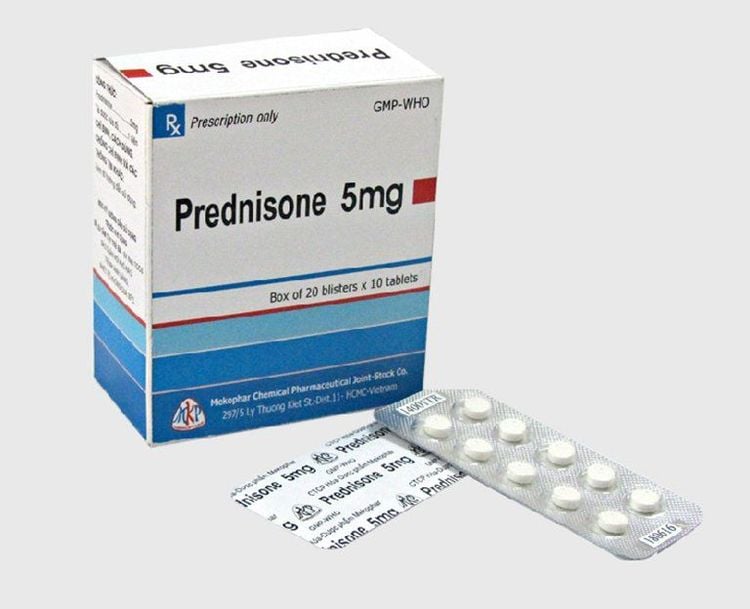
Viêm mạch Takayasu có thể điều trị bằng prednisone
For long-term treatment, in addition to prednisone, methotrexate, azathioprine, and even cyclophosphamide are sometimes used. However, there is little research on the use of these drugs.
In patients who do not respond to standard therapy, immunomodulatory drugs such as adalimumab, etanercept, infliximab and tocilizumab can be used. However, larger studies on the effectiveness of this class of drugs are needed.
If the lumen is severely narrowed or blocked, surgery is indicated to restore circulation. Methods of revascularization include stenting, percutaneous angioplasty, and arterial bypass surgery.
In addition, maintaining a healthy lifestyle such as not smoking, exercise and a good diet are effective ways to reduce the risk of further damage to blood vessels and organs.
In a nutshell, takayasu vasculitis is inflammation that occurs in large blood vessels, including the aorta and other large arteries. Diagnosis of Takayasu disease is based on clinical symptoms and vascular imaging. Treatment for takayasu vasculitis includes medication, surgery, and maintaining a healthy lifestyle.
Please follow the website: Vinmec.com regularly to update many other useful information.
Please dial HOTLINE for more information or register for an appointment HERE. Download MyVinmec app to make appointments faster and to manage your bookings easily.
Reference articles: hopkinsvasculitis.org, dieutri.vn, hoangmysaigon.com, yhoccongdong.com



